
Within the human body, millions of processes are occurring at all times. These processes require oxygen. Unfortunately, that same life giving oxygen can create harmful side effects, or oxidant substances, which cause cell damage and lead to chronic disease. The prefix "anti" means against, in opposition to, or corrective in nature. In order to understand antioxidants, it helps to learn what exactly these agents oppose and correct.
Oxidants, commonly known as "free radicals," are also introduced through external sources such as exposure to the sun or pollution. Other mediums include stress, as well as things that people put into their bodies, such as alcoholic beverages, unhealthy foods, and cigarette smoke.
Oxidative stress occurs when the production of harmful molecules called free radicals is beyond the protective capability of the antioxidant defenses. In much the same way as oxidation creates rust, causing a breakdown on the surface of inanimate objects, oxidation inside the body causes a breakdown of cells. Free radicals are chemically active atoms or molecular fragments that have a charge due to an excess or deficient number of electrons. Examples of free radicals are the superoxide anion, hydroxyl radical, transition metals such as iron and copper, nitric acid, and ozone. Free radicals containing oxygen, known as reactive oxygen species (ROS), are the most biologically significant free radicals. ROS include the radicals superoxide and hydroxyl radical, plus derivatives of oxygen that do not contain unpaired electrons, such as hydrogen peroxide, singlet oxygen, and hypochlorous acid.
Certain antioxidant enzymes are produced within the body. The most commonly recognized of these naturally occurring antioxidants are Superoxide Dismutase, Catalase, and Glutathione. Superoxide Dismutase changes the structure of oxidants and breaks them down into hydrogen peroxide. Catalase in turn, breaks down hydrogen peroxide into water and tiny oxygen particles or gasses. Glutathione is a detoxifying agent, which binds with different toxins to change their form so that they are able to leave the body as waste.
Because they have one or more unpaired electrons, free radicals are highly unstable. They scavenge your body to grab or donate electrons, thereby damaging cells, proteins, and DNA (genetic material). The same oxidative process also causes oils to become rancid, peeled apples to turn brown, and iron to rust.
Other antioxidant agents are found in foods, such as dark green leafy vegetables. Items high in vitamin A, vitamin C, vitamin E, and beta-carotene are believed to be the most beneficial. These nutrients are commonly found in fruits and vegetables, those with the strongest colors being healthiest. Orange and red peppers, tomatoes, spinach, and carrots are examples.
It is impossible for us to avoid damage by free radicals. Free radicals arise from sources both inside (endogenous) and outside (exogenous) our bodies. Oxidants that develop from processes within our bodies form as a result of normal aerobic respiration, metabolism, and inflammation. Exogenous free radicals form from environmental factors such as pollution, sunlight, strenuous exercise, X-rays, smoking and alcohol. Our antioxidant systems are not perfect, so as we age, cell parts damaged by oxidation accumulate.
Health problems such as heart disease, macular degeneration, diabetes, cancer etc are all contributed by oxidative damage. Indeed, a recent study conducted by researchers from London found that 5 servings of fruits and vegetables reduce the risk of stroke by 25 percent. Antioxidants may also enhance immune defense and therefore lower the risk of cancer and infection.
Most Commonly Known Antioxidants
Our bodies naturally contain certain anti-oxidant enzymes such as superoxide dismutase, but we can also get them from the foods we eat. The best known anti-oxidants are beta carotene, vitamins C and E, and the mineral selenium. Other anti-oxidants include ginkgo biloba, coenzyme Q10, tocotrienols, and polyphenols, which are substances found in most plants.
It is important to note, however, that all anti-oxidants do not do the same job or work in the same manner. For example, copper, manganese, zinc, selenium and other trace minerals are really only anti-oxidants when they combine with bodily enzymes to try to eliminate free radicals. Vitamins A, C, E and beta-carotene seem to work on their own or in conjunction with each other. Vitamin C, for instance can work in partnership with vitamin E, cleaning free radical substances from vitamin E molecules so those molecules can continue to attack other free radicals. Beta-carotene converts to vitamin A, a powerful anti-oxidant, when there is a shortage of vitamin A in the body. Lycopene, found in many fruits and vegetables, appears to assist the male prostate, although it also has a positive anti-oxidant effect body wide as well.
If you get an adequate supply of one anti-oxidant, it doesn't mean you wouldn't benefit by the use of another. There is also such a thing as too much of an anti-oxidant; Vitamin A can be toxic when taken in too large a quantity. This is an area where your own research should be combined with a consultation with a doctor or dietitian.
Public health organizations continuously recommend that we eat 7-13 servings of fruits and vegetables per day, because they are rich in antioxidants and are an excellent source of dietary fiber. Moreover, substituting fruits and vegetables, which are nutrient dense, for processed foods, which are calorie dense, can help people achieve long term control of their weight. Natural antioxidants are also found in whole grains. In particular, barley and oats should be included, if a person wants a rich antioxidant diet.
The best known sources of antioxidants are fruits and vegetables. Natural antioxidants are as important to plants as they are to humans for preventing oxidative stress and damage from UV light. Multiple types of natural antioxidants are needed to maintain the complex system that prevents cell damage and death.
The Best Antioxidant Foods
Berries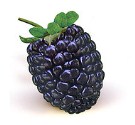
Few fruits have quite the provocative allure, the fragile charm or the nutrients of berries. They're full of fiber, minerals and vitamins, and loaded with healing antioxidants. Blueberries, raspberries and blackberries are rich in proanthocyanidins, antioxidants that can help prevent cancer and heart disease. Strawberries, raspberries and blackberries contain ellagic acid, a plant compound that combats carcinogens. Blueberries also appear to delay the onset of age-related loss of cognitive function.
Broccoli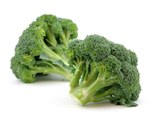
Along with other cruciferous veggies such as cabbage, cauliflower, and Brussels sprouts, broccoli may help in preventing cancer and heart disease. In general, the crucifers contain indole-3-carbinol, which is a powerful antioxidant that breaks down estrogen and reduces the risk of breast cancer, along with ovarian and cervical cancer. Beta-carotene is also found in broccoli, and is though to be a cancer and heart disease preventative. Drizzle lightly-steamed broccoli with salad dressing and enjoy.
Carrots
They are power packed with beta-carotene, a member of the carotenoid family of antioxidants. This free-radical fighter is also found in yellow-orange vegetables, sweet potatoes, and beets. Beta-carotene fights cancer and can reduce arthritis from progressing by as much as 70%. Cook carrots for the highest amount of available antioxidants, since heat breaks down active compounds, making them more available.
Grapes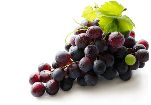
Grapes provide a wealth of nutrients, such as folate, vitamins (A, B6 and C), calcium, iron, selenium, potassium, phosphorus particularly the dark-skinned grapes. Grapes have been known to contain over 20 types of antioxidants, and one of the powerful antioxidants is flavonoids that can reduce/prevent cell damage due to the presence of free radicals in our body. The nutritional value of grapes plays a pivotal role in preventing/reducing innumerable diseases such as cardiovascular disease, migraine, constipation, asthma, indigestion, fatigue, kidney disorder, breast cancer, macular degeneration, Alzheimer’s disease, and cataracts.
Tomatoes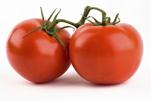
Tomatoes are fast becoming one of our favorite modern foods, and for good reason -- they can ward off certain kinds of cancer, prevent macular degeneration and cataracts, and help maintain mental function as we age. Tomatoes contain lycopene, a relatively rare member of the carotenoid family, also found in pink grapefruit and twice as powerful as beta-carotene. Studies have shown that men who eat more tomatoes or tomato sauce have significantly lower rates of prostate cancer. Other studies suggest lycopene can help prevent lung, colon and breast cancers. Tomatoes also contain the antioxidant glutathione, which helps boost immune function. Note: cooked tomatoes are preferable, since heat allows more desirable antioxidants in tomatoes to be made available to the body. And because lycopene is fat-soluble, eating tomatoes with oil can improve absorption.
Garlic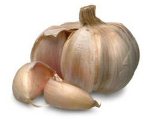
It has been shown to help prevent heart disease, cancer, and slow down aging. The key ingredients are the sulfur compounds that give garlic its pungent aroma and taste. Keep your heart healthy and prevent cancer by adding garlic to soups, stews, or spreading roast garlic on warm bread. Garlic is also an excellent anti-fungal and can help with asthma and yeast infections
Soy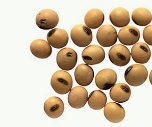
It’s amazing at just how many foods are either made from or contain mostly soy products. There is anything from soy milk to soy burgers in the store today. There’s bound to be some sort of combination that surely anyone can find something that satisfies his/her taste buds. It’s hard to imagine that these odd little beans can create some of the most fantastic foods around. Certain brands of chocolate soy milk tastes just like a milk shake. It is scrumptious!
Spinach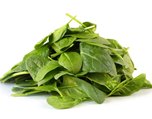
There are many people who don’t like the taste of spinach, but they usually have only tried it one way. I grew up eating canned spinach. Later in life, I found how wonderful fresh spinach is in salads. I also discovered that I could get my son to eat it by making a wilted salad with it. You follow the same process as making a wilted lettuce salad, just use spinach instead. It’s one of those antioxidant foods that is better raw, since you will get a lot more of the antioxidants from it. Grown-ups always tell little kids about how carrots help eyesight, well, spinach does too! It contains lutein, which is a pigment that shields the retina of your eye from sun damage.
Whole Grains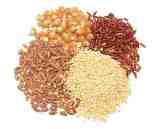
Eating cereal for breakfast is an easy way to start out the day with some antioxidants. There are tons of cereals that state right on the box that they are made with whole grains, so be sure to check next time you head to the store for cereal. Besides breakfast cereals, many breads are made from whole grains, which are perfect for an antioxidant-filled sandwich at lunch. Bulgur wheat is an excellent grain that can be cooked up with some scallions, garlic and olive oil. Combining this mixture with some basil and brown rice makes an excellent side dish for dinner.
Antioxidant supplements
Antioxidant refers to a group of organic substances, including vitamins C and E, vitamin A, selenium (a mineral), and a group know as carotenoids - beta-carotene being the most popular and well know carotenoid. Carotenoids are the pigment compounds that give many fruits and vegetables their vibrant colors. Antioxidants are believed to be effective in helping to prevent cancer, heart disease, stroke and a variety of other ailments associated with natural aging. Specifically antioxidants prevent ailments by destroying free harmful radicals inside the human body.
The human body produces a number antioxidant enzymes, including superoxide dismutase (SOD), glutathione peroxidase, and catalase, that destroy many types of harmful free radicals. Supplements of these enzymes are available for oral administration. However, absorption of these enzymes is most likely minimal at best. Supplementing with the components the body requires to make these enzymes may be more effective.
Many experts believe that the best way to provide the body with the most complete protection against free radicals is to consume a large variety of antioxidants.
Vitamin E: d-alpha tocopherol. A fat soluble vitamin present in nuts, seeds, vegetable and fish oils, whole grains (esp. wheat germ), fortified cereals, and apricots. Current recommended daily allowance (RDA) is 15 IU per day for men and 12 IU per day for women.
Vitamin C: Ascorbic acid is a water soluble vitamin present in citrus fruits and juices, green peppers, cabbage, spinach, broccoli, kale, cantaloupe, kiwi, and strawberries. The RDA is 60 mg per day. Intake above 2000 mg may be associated with adverse side effects in some individuals.
Beta-carotene: is a precursor to vitamin A (retinol) and is present in liver, egg yolk, milk, butter, spinach, carrots, squash, broccoli, yams, tomato, cantaloupe, peaches, and grains. Because beta-carotene is converted to vitamin A by the body there is no set requirement. Instead the RDA is expressed as retinol equivalents (RE), to clarify the relationship. (NOTE: Vitamin A has no antioxidant properties and can be quite toxic when taken in excess.)
Grape seed extract was discovered, the best sources of antioxidants came from vitamin C, E, and beta-carotene; however, these sources were not powerful enough to fight the free radicals and are also excreted by the body within a short time of ingestion. Grape seed extract, on the other hand, has been shown to remain in the body for as long as 3 full days, and is 20 times more potent than vitamin C, and 50 times more stronger than Vitamin E.
Ginkgo biloba: The medical indications of Ginkgo biloba extract are attributed primarily to two groups of active constituents: ginkgo flavone glycosides and the terpene lactones. Ginkgo flavone glycosides, which usually make up approximately 24% of standardized extracts, are primarily responsible for Ginkgo’s antioxidant activity and may mildly inhibit the stickiness of blood platets whereby preventing such circulatory diseases as atherosclerosis. Ginko’s flavone glycosides are also believed to support the brain and central nervous system. Additionally, the antioxidant action exhibited by its active constituents may also extend to the brain and retina of the eye.
Green Tea:Tea contains vitamins A, C, and E as well as health-promoting compounds called Flavonoids. The flavonoids, called polyphenols, act as antioxidants that counter the effects of reactive oxygen molecules that result from normal body functions and contribute to aging and chronic disease.
How much is enough?
Although there is little doubt that antioxidants are a necessary component for good health, no one knows if supplements should be taken and, if so, how much. Antioxidants supplements were once thought to be harmless but increasingly we are becoming aware of interactions and potential toxicity. It is interesting to note that, in the normal concentrations found in the body, vitamin C and beta-carotene are antioxidants; but at higher concentrations they are pro-oxidants and, thus, harmful. Also, very little is known about the long term consequences of megadoses of antioxidants. The body's finely tuned mechanisms are carefully balanced to withstand a variety of insults. Taking chemicals without a complete understanding of all of their effects may disrupt this balance.
Disclaimer: This website is for information purposes only. By providing the information contained herein we are not diagnosing, treating, curing, mitigating, or preventing any type of disease or medical condition. Before beginning any type of natural, integrative or conventional treatment regime, it is advisible to seek the advice of a licensed healthcare professional.
![]()


































